— July 21, 2019

American consumers, if not global consumers, have become Subscription Nation. Sure there are the staples: Netflix, Spotify, cell phone plan, health insurance (kidding); but we’ve only recently been on the subscription box kick, and its impact has been shaking up eCommerce.
According to Fuel by McKinsey, the subscription eCommerce market is worth about $ 10 billion (and that’s not even counting Amazon Prime and its “subscribe and save” portion). For an industry that’s been around for about a decade or so (most of the players much less), that’s impressive growth. In fact, the average active subscriber of such services has two subscriptions, and over a third have three or more subscriptions. This shows that once a consumer gets a taste of the convenience and joy of receiving monthly packages, they get hooked.
But why?
The psychology of subscription boxes

A 2018 study by McKinsey & Company broke down the subscription box companies into three categories: replenishment, curation, and access. These also neatly fit the psychological reasons consumers love to shop this way:
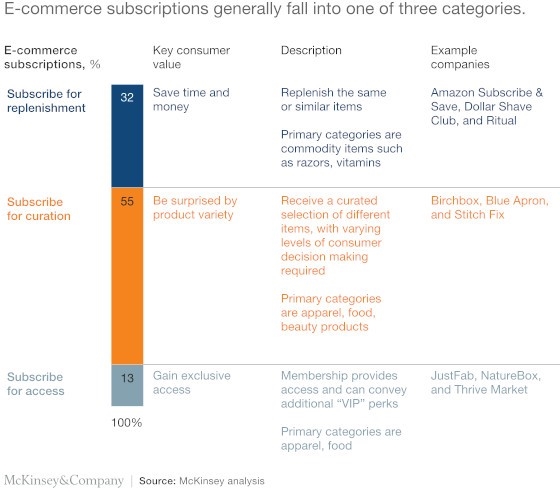
Replenishment is all about convenience. Who wouldn’t want something they constantly buy anyway arriving on their doorstep? If you buy into the idea that we all get Decision Fatigue, that’s one (or seventeen) fewer items to think about when it comes to shopping. As you can see, about a third of people subscribe for this reason.
Skipping ahead to Access, that’s a much smaller sliver because these consumers are subscribing to be a part of a community and get/earn bonuses. Sometimes, the only way to get certain items is to be a subscriber, and these people are willing to pay a premium to get a discount… and that’s not as counter-intuitive as it sounds. After all, you can’t watch Stranger Things unless you have Netflix (or know someone’s password).
But the bulk of subscribers are all about Curation, aka, the Christmas Experience. They want to be surprised, and that anticipation and the eventual act of unboxing (which in of itself is a hugely popular topic on YouTube), is what gets them hooked.
Even for the low-key “replenishment” category, which includes Dollar Shave Club and Ritual, consumers ranked the novelty-seeking aspect of “personalized experiences” as one of the top three most important considerations in choosing a subscription box service. For the “curation” category, it was the most important aspect.?—?Pitchbook.com
And if your business can get your customers to eagerly anticipate a surprise each month? You’ve got yourself a steady revenue base.
Businesses hitting big with the subscription box model

This graphic from Hitwise (via Forbes) shows the top subscription sites seeing massive amounts of visitors. The same article cites that:
The online subscription market has more than doubled each year over the past five years, with the largest players among them generating more than $ 2.6 billion in 2016 sales, up from just $ 57 million in 2011, according to the McKinsey study.
When a business is seeing billions in subscription sales, it perks up some ears. And who wouldn’t want to get in on this type of eCommerce? Let’s run down some of the major benefits of a subscription business:
- Consistent revenue?—?Unlike other eCommerce stores, you have an accurate sense of what your monthly sales will be. Sure there is a certain churn rate, as with all service businesses, but it’s no where near as fickle as regular stores which live and die on seasonality.
- Accurate inventory?—?Your business will have a leg up on manufacturing and storing just the right amount of product. Overstock situations should be less frequent than other businesses, which also helps save on overhead.
- Built-in Marketing?—?All those boxes are beautifully packaged with large logos for a reason. Anyone who happens across the front porch will see it. Not to mention all the Influencers unboxing your wares on YouTube (more on this later).
- Personalization?—?Customers are more loyal when they feel an emotional connection to what they buy. Subscription boxes that can tailor to their customers can encourage a rabid loyalty that other companies can only dream of.
So is there any reason NOT to get into the subscription box industry? Well…
Are we at peak subscription box?
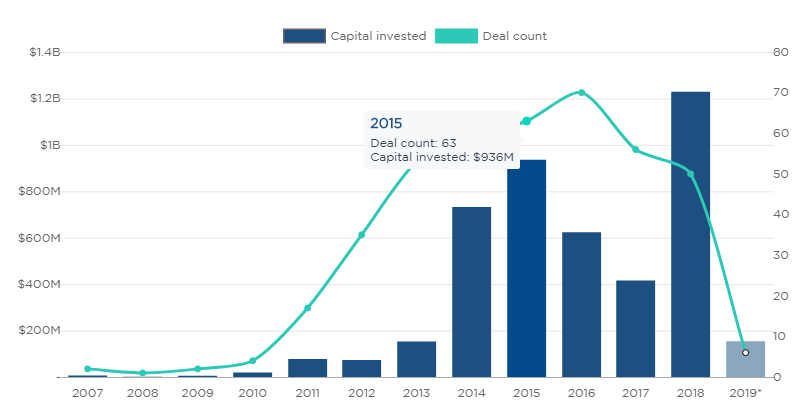
According to data from PitchBook, while 2018 saw the most amount of capital ever invested into subscription box businesses, the number of venture capital deals peaked back in 2016. Growth overall seems to be slowing which may be signaling that the young industry is already maturing, allowing the bigger fish to flourish while the smaller ones die out. In fact, 13% of merchants tracked by My Subscription Addiction (basically an index of all these services) have stopped operations.
Another worry is the advantage that the big-box retailers have if and when they get into the subscription box game. Amazon by itself dwarfs just about every other business with its “Subscribe and Save” option. Remember that a third of the consumers who get subscriptions at all do it for Replenishment? It’s hard to compete with Amazon on that, and suddenly there goes a third of the market.
And yeah, Walmart does it too.
So is it a bad idea for you to get in the game?
Tips on running a successful subscription box e-commerce business
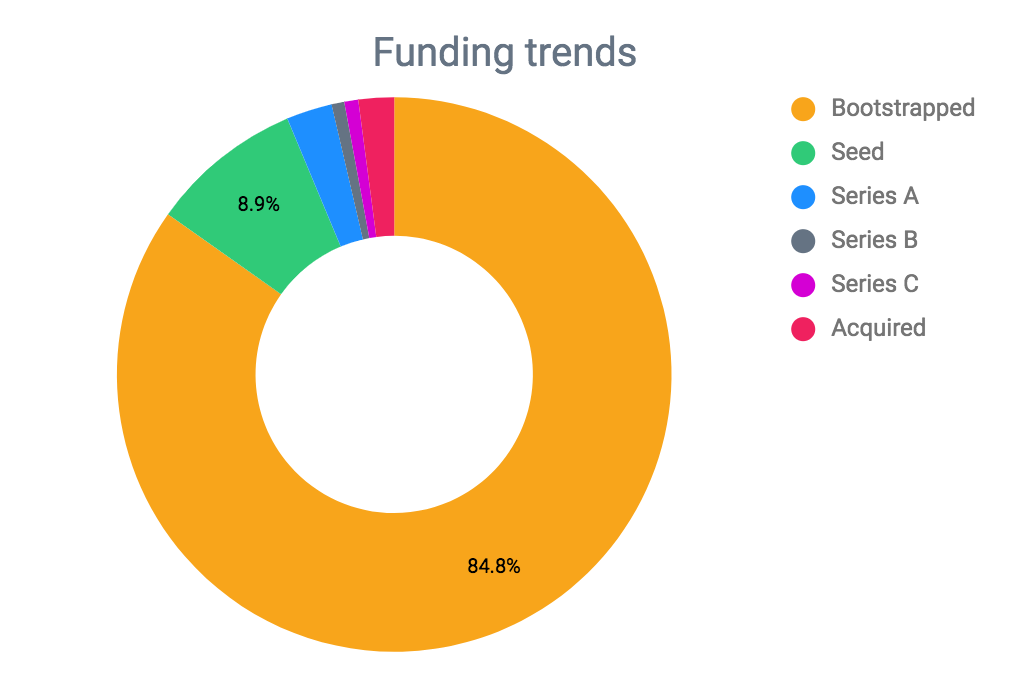
A graph like this from Entrepreneur is nice to see, because it shows that there is a fairly low bar to entry in the subscription box market. Seeing just how many of them bootstrapped their way into life shows that it can be done without tons of funding. At the same time, be wary: because the bar is low, competition can get stiff.
Which is why it’s important to choose a sector that isn’t yet too crowded. Check out this other graphic from Entrepreneur:
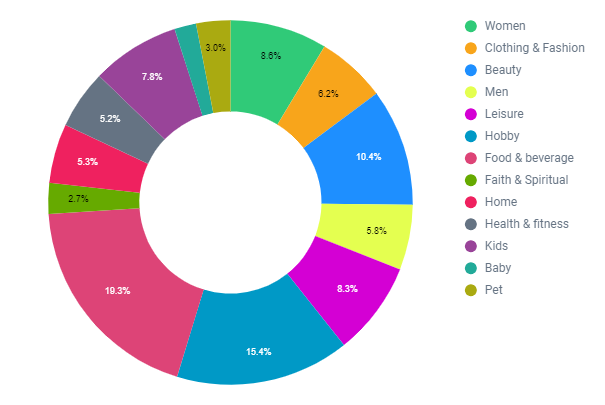
Thinking about getting in on food & beverage, or baby products? Those are already pretty popular and perhaps saturated. Meanwhile, the pet sector seems relatively small, as does the faith & spiritual group. Doing your research into the major (and minor) players in the vertical you want to launch in will be an important first step to see if your subscription e-commerce business will be successful.
Next, remember that over 50% of subscribers do so for Curation. Meaning, you’ll have more success if you stay away from Replenishment and Access types of subscriptions. Staples like shaving kits and baby wipes might already be cornered by the big players, and fancy “VIP”-ish products like high-end organic health food might be a tough sell. But providing boxes of niche, specific items that surprise and inspire will go a long way. Companies like LootCrate have found success catering to “geeks” and always wowing them with things they haven’t seen before.
And if you can navigate the shipping headaches, know that the international market is far behind on subscription boxes:
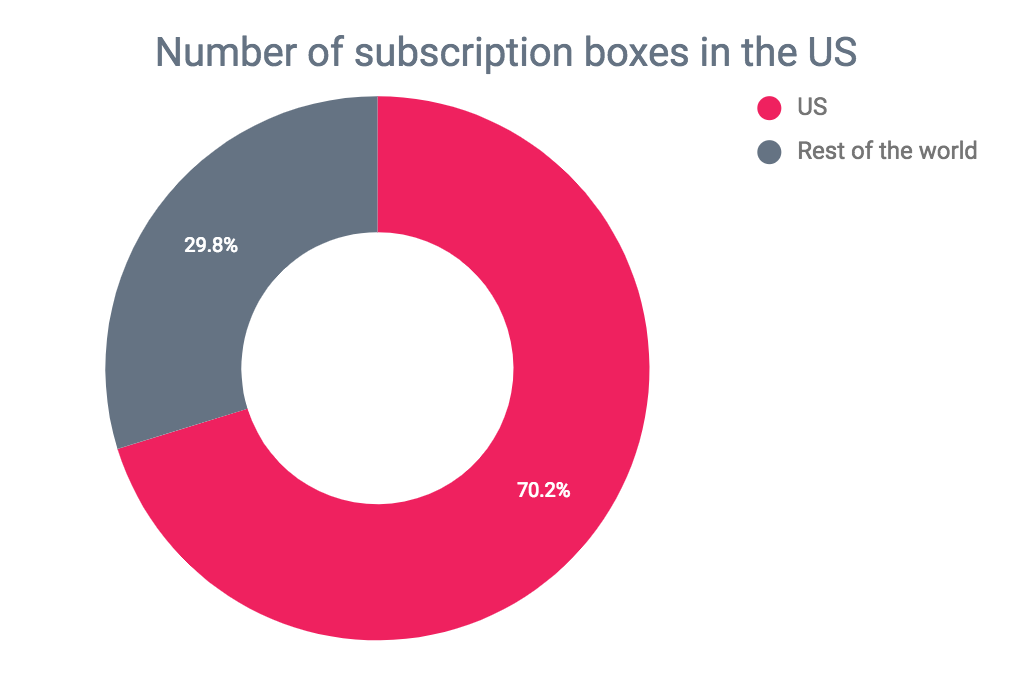
There’s a whole world out there that would also like to get products delivered to their door, on a monthly basis. If the economics work out to ship to Europe, Asia, or South America, there could be space in the market for your business.
Finally, according to a study by Hitwise, there is a very effective marketing channel to acquire new subscribers. Any guess as to what it might be?

Yes, affiliate marketing seems to be the fastest growing traffic source and “key to customer acquisition.” And this makes sense. Many subscription boxes hit the Millennial demographic, and they continue to be influenced by, well, Influencers.
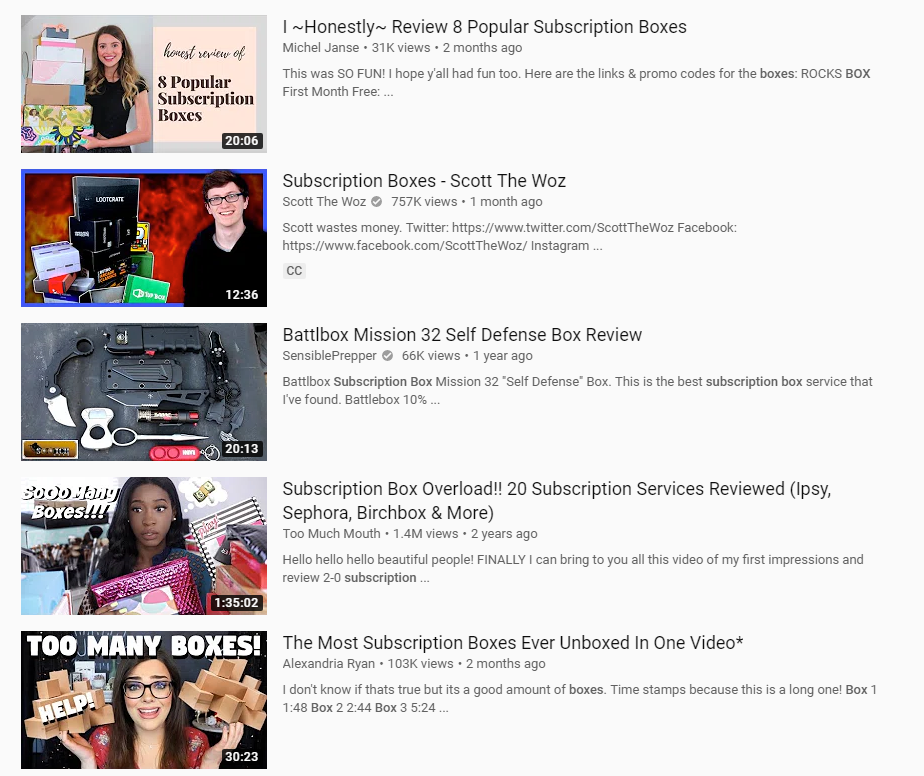
Influencers who open boxes for review and get ten of thousands to millions of views, which can be some of the best marketing ROI you can get. How else can you obtain 1.4 million eyeballs on your product by sending a $ 20 box to an Influencer to get his/her take? They love getting free stuff, people love watching them unbox, and you get all that great marketing (and sales through the Influencer’s affiliate link in the video description). It’s win-win-win.
Every niche has an Influencer just hoping that a company will give them a commission for reviewing products. Some niches, like beauty, are saturated and will command large commission rates; but others are small enough that those Influencers will be happy with much lower amounts. For more information, check out our guide to working with YouTube influencers.
In our own estimation based on our clients who are in the subscription box business, this sector of eCommerce still seems to be growing by leaps and bounds. Now just might be a great time to leap into the fray with your own unique subscription box business that can capture a hefty share of the market.
Digital & Social Articles on Business 2 Community
(120)
Report Post





